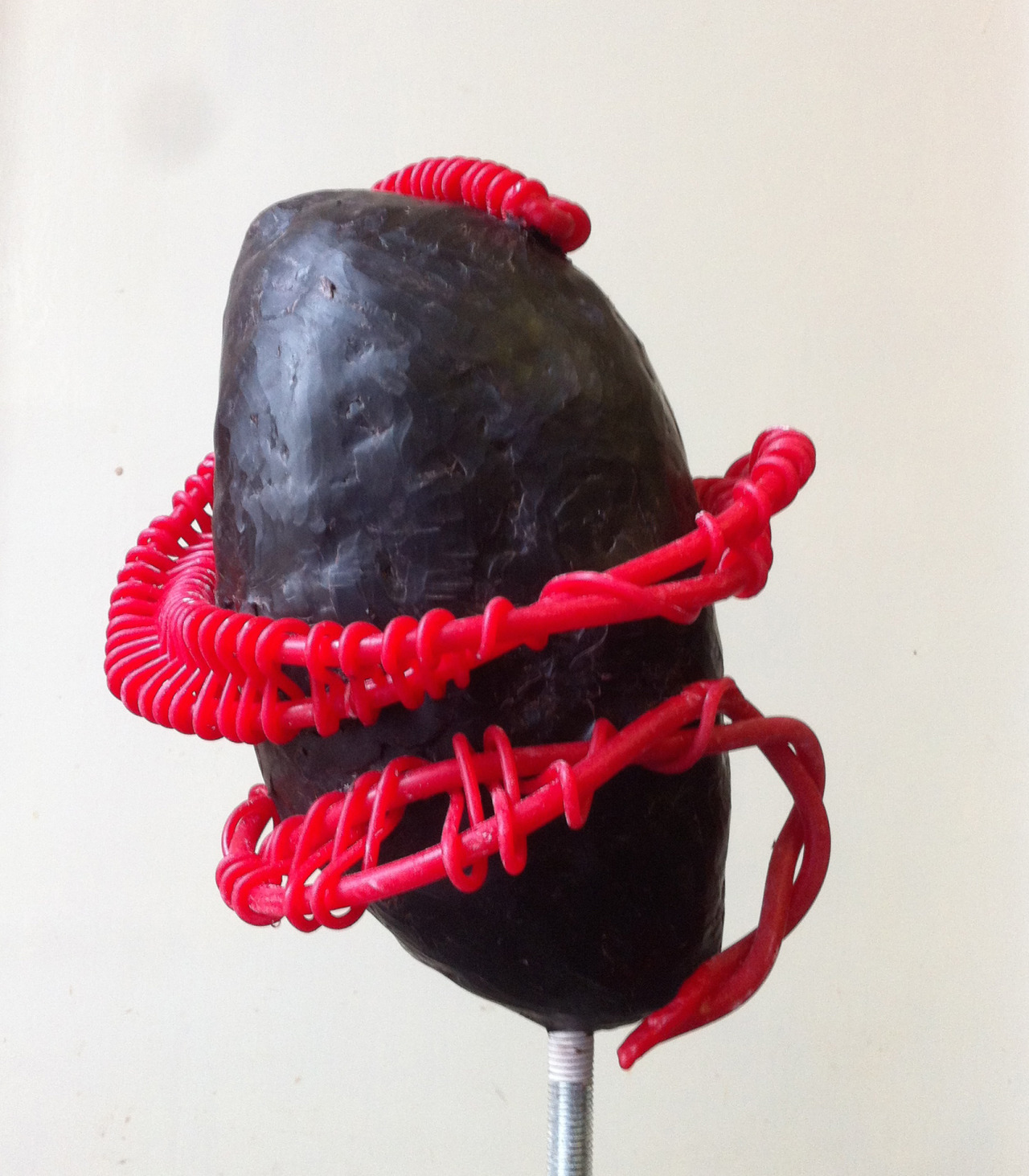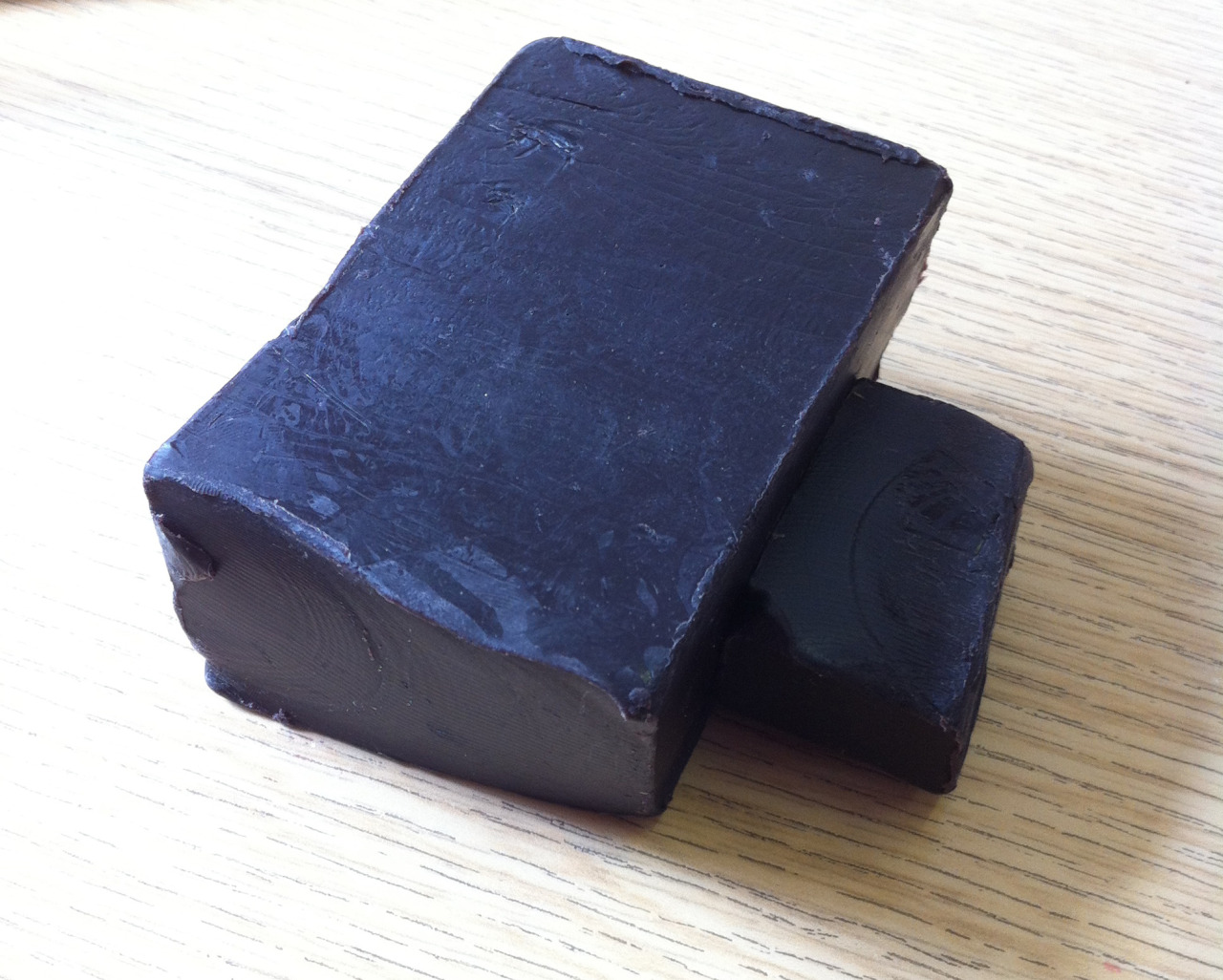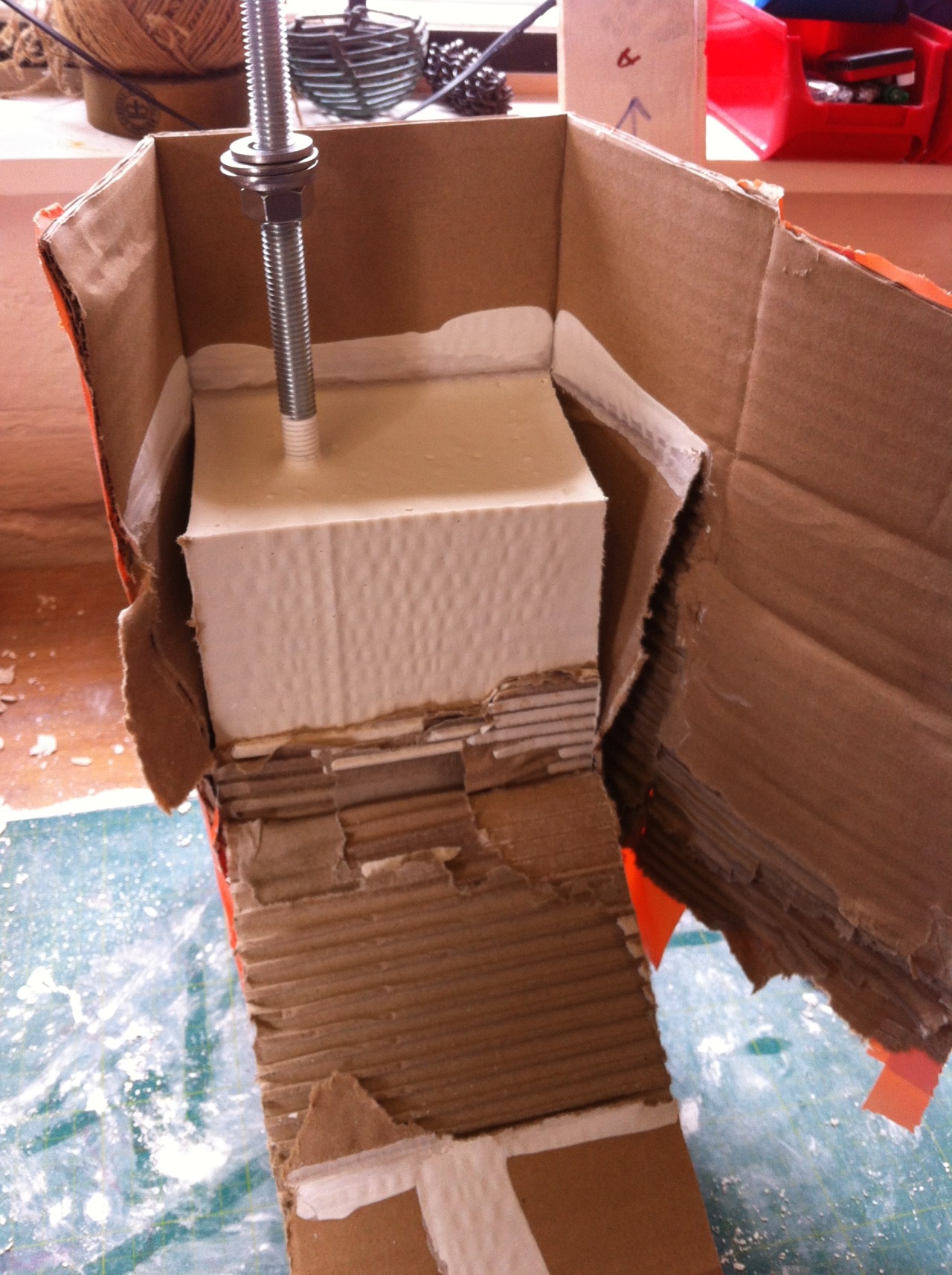Woven Experiment No.68 - Smooth and texture
With this experiment I wanted to try and combine the texture of a woven section with a smooth area to see what results the combination would create.
A solid core of plaster was cast and carved into an oval form, then a covering of smooth wax and then a detail figure 8 swirl wrapping around the form.
With this experiment I found I had a more finished look than with any other piece so far. It required very little welding on the red wax as the weaving was made using a continuous length of 3mm wax.
The sticky wax smoothes to a degree with the fingers but it can cause drag. Using a tea spoon heated in boiling water seems to work to smooth out areas. But the question is how much to work something? should the smooth wax be completely void of marks or would it add to the sculpture to leave behind finger prints, dints and other small features?


















